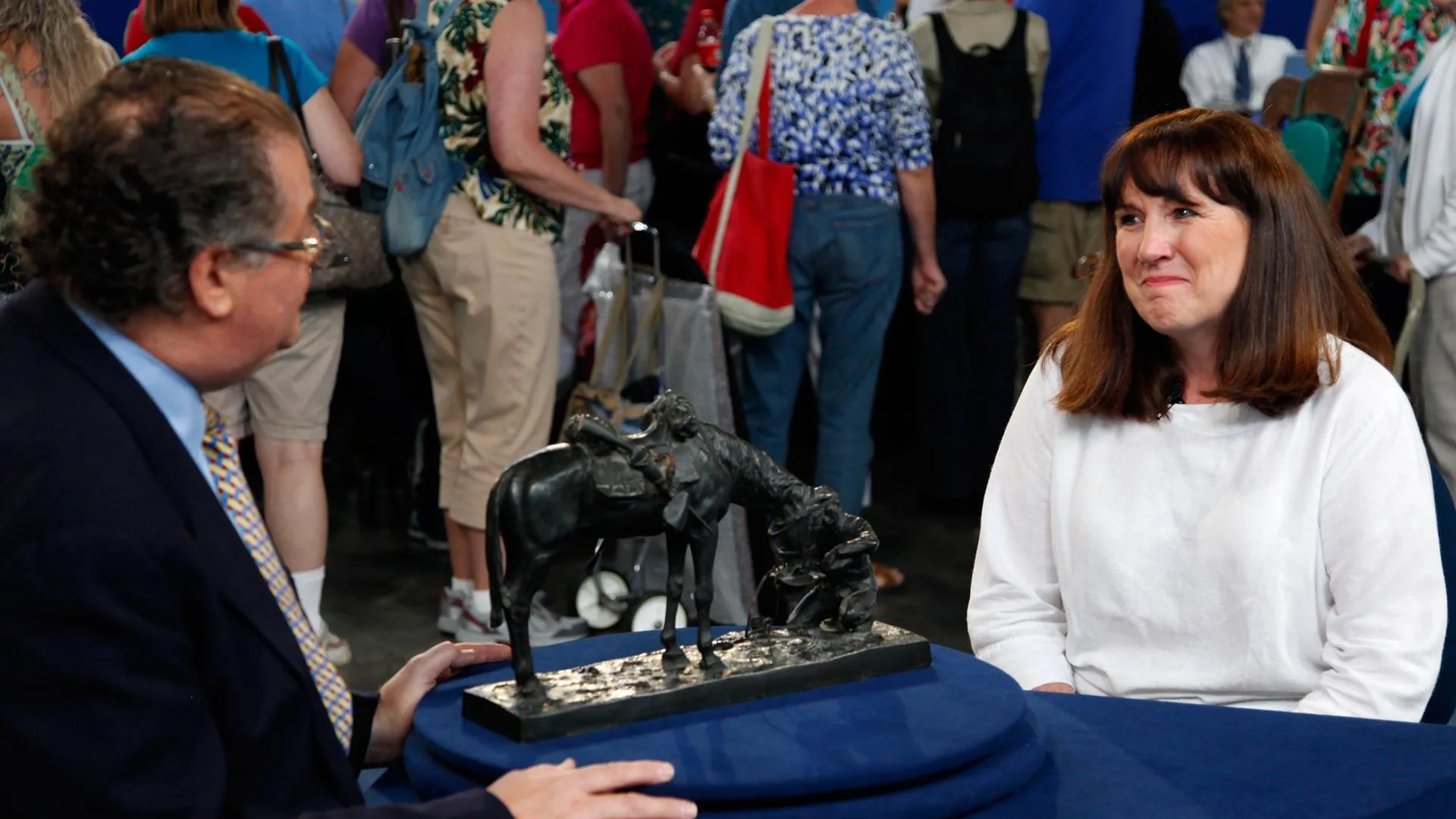GUEST: The family believes it was bought in 1828. That's when great-great-grandparents were married in Lancaster. That's where it was purchased. And it's been in the family ever since. Luckily, I have nine-foot ceilings, so it's in our living room. I think that's one of the reasons why I inherited it.
APPRAISER: Probably gets a little tight to the nine foot, doesn't it?
GUEST: I think there's like an inch to spare. It's a little tricky getting it into the house. (both laugh) In the old house in Hagerstown, which had 12-foot ceilings, there was a picture of a pediment on top about a foot tall.
APPRAISER: So that got lost through the years?
GUEST: Somewhere through the years, yes.
APPRAISER: The great thing about this, and maybe the thing that limits it somewhat, is the fact that it is so tall. But the fact that it is so tall gives it a lot of presence. It has wonderful architectural detail. The keystone at the top is a nice touch. And I like the arch in the doors, and I especially like that molding that mirrors that. The other thing that makes this interesting from a visual point of view is the fact that it has curly maple.
GUEST: I thought it was called tiger maple. Is that something different?
APPRAISER: Well, either one.
GUEST: Oh, okay.
APPRAISER: When this was made new, that curly maple would have been like on fire. And you would have been able to see down in there and see all those little squiggles where that cross grain is.
GUEST: Yeah.
APPRAISER: And it would have really brightened up the room.
GUEST: Oh, fantastic.
APPRAISER: But after 170 years, that gets a patina on it. I think this has probably had some type of a refinish or it was rubbed down. The varnish over time will get a craquelure to it. Normally, you would see more of the craquelure. Now, part of the curly maple is a veneer.
GUEST: Really? Where?
APPRAISER: You see right here on this door?
GUEST: Yeah.
APPRAISER: The very front of this is a little line of maple, but more importantly, what does the door look like from your side?
GUEST: Very plain.
APPRAISER: You see any curl in it?
GUEST: Nothing, no.
APPRAISER: It's all cherry secondary with a curly maple front. However, in some areas, you do have solid curly maple. Because look in the... you see?
GUEST: You're right, you see it there.
APPRAISER: And the back of that drawer. This also has yellow pine secondary.
GUEST: Oh, good grief, a little bit of everything.
APPRAISER: Which makes me think that it's probably closer to Hagerstown than it is Pennsylvania.
GUEST: Oh, okay.
APPRAISER: It's a misconception that everything that has yellow pine secondaries is Southern. And I don't disagree at all with the 1830 to '40 date on that.
GUEST: Okay, excellent. Are these original?
APPRAISER: I doubt it, but it's the right time period for a Sandwich pull. So, value. What do you think?
GUEST: Well, only value we knew, my grandmother actually paid $700 to her sister, and that was in the '60s. Because my great-aunt Elsie needed coal for the winter, and that was the exchange.
APPRAISER: Well, today, for a retail or an insurance value, I would put $9,500 on this.
GUEST: Whew, okay.
APPRAISER: You can live with that?
GUEST: I can.



